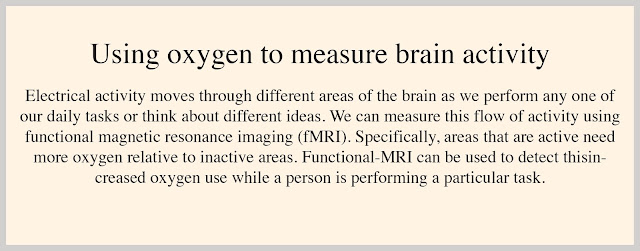Patanjali
described yoga as the stilling of the fluctuations of
the mind (1). But what is a fluctuating or wandering mind?
Information processed by the mind
At any one time our brains are stimulated by either perceptual or conceptual information. The perceptual world is the external environment perceived by our 5 senses (sight, hearing, touch, taste, and smell). The conceptual world is our inner environment made of our thoughts and emotions. With regards to thoughts, our minds can fluctuate between two types 1) focused and goal directed, or 2) undirected and spontaneous.
Information processed by the mind
At any one time our brains are stimulated by either perceptual or conceptual information. The perceptual world is the external environment perceived by our 5 senses (sight, hearing, touch, taste, and smell). The conceptual world is our inner environment made of our thoughts and emotions. With regards to thoughts, our minds can fluctuate between two types 1) focused and goal directed, or 2) undirected and spontaneous.
Mind wandering
When we’re not actively paying attention our thoughts by default become spontaneous and begin to wander. When this occurs thoughts become self directed- we usually ruminate about past events or speculate about the future. But, even when we actively try to pay attention we often catch ourselves in spontaneous thought, revealing what appears to be a predisposition for this thought pattern. Research has found that mind wandering has a biological basis in the brain. Because we seem to be more likely to do it when we have nothing else to think about the brain regions involved have been named the default mode network.
The
discovery of the default mode network happened by accident and was only first formally reported in 2001 (2). Neuroscientists were including
a resting baseline condition when performing fMRI studies and were expecting unpredictable
brain activity. Instead they found increased activation predominantly
concentrated within the midline of the cortex (i.e., medial temporal lobe,
medial prefrontal cortex, posterior cingulate cortex, precuneus, and inferior
parietal cortex). They found this was associated with self-reported mind
wandering and that activation in this network would reduce when a person payed
attention (3).
Research in 2014 has shown that the default mode network has the greatest degree of structural-functional connectivity compared to any other
cortical brain network (4). So no wonder it's easy to slip away from goal directed thought into spontaneous mind wandering. But, why the brain is
structured to have this default mode of operation that so often predominates over other other thought patterns is currently debated by neuroscientists. Further food for thought is whether the default mode network is this easily activated from birth, or perhaps for some reason we start to favour the use of this network over our lifetime?
During
meditation an individual reduces their preoccupation, or tendency, for mind wandering.
Fittingly, it has been shown that a number of different meditation styles reduce
activity within the default mode network (5). This not only occurs during meditation practice but also persists during rest (6). Overall, research has shown that meditation actively changes the biological tendency of the brain away from what appears to be its default mode of operation.
--------------
References
1. Byrant
EF. The Yoga Sutras of Patanjali. New York: North Point Press; 2009.
2. Raichle ME, MacLeod AM, Synder AZ, et
al. A default mode of brain function. PNAS
2001;98:676-82.
3. Mason MF, Norton MI, Van Horn JD, et
al. Wandering minds: The default network and stimulus independent thought. Science 2007;315:393-5.
4. Horn A, Ostwald D, Reisert M, et al.
The structural–functional connectome and the default mode network of the
human brain. Neuroimage
2014;102:142-51.
5. Brewer JA, Worhunsky PD, Gray JR, et al.
Meditation experience is associated with differences in default mode network
activity and connectivity PNAS;108:20254-9.
5. Taylor VA, Daneault V, Grant J, et al.
Impact of meditation training on the default mode network during restful state.
SCAN 2013;8:4-14.

